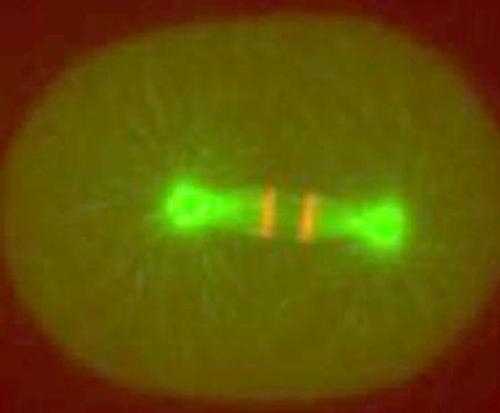All multicellular organisms that reproduce sexually rely on eggs to support early life. Researchers at University of California, San Diego School of Medicine and Ludwig Cancer Research used the tiny roundworm C. elegans as a model to better understand how eggs enable embryonic development, using only the materials already present in them. Their study, published March 24 in Cell, uncovers the role small RNAs -- a type of genetic material -- and helper proteins play in fine-tuning egg development.
"Eggs differ from other growing cells, where nutrients are used to build up cell mass before division occurs," said Arshad Desai, PhD, professor at UC San Diego School of Medicine and member of Ludwig Cancer Research's San Diego branch. "A frog egg, for example, makes about 3,000 cells by simply dividing into smaller and smaller cells, without growth. We were interested in understanding how eggs are able to do this."
Adding to the growing body of knowledge on small RNAs and how they influence cellular function, this study shows that small RNAs work together with an enzyme known as an Argonaute to help create the perfect C. elegans egg. The researchers based their study on earlier work showing that a specific Argonaute protein called CSR-1 affects chromosome distribution in the first division of the embryo that occurs after the egg is fertilized.
 This is a C. elegans egg with CSR-1 protein inhibited. Microtubles are shown in green, chromosomes in red. Credit: UC San Diego Health
This is a C. elegans egg with CSR-1 protein inhibited. Microtubles are shown in green, chromosomes in red. Credit: UC San Diego Health
A prior study had suggested that CSR-1 influences cell division by helping to define centromeres --specialized regions on chromosome that help distribute them during division. However, in this study the researchers found that CSR-1 does not control centromere formation in early embryos. Instead, they discovered, CSR-1 is essential for building the spindle -- the cellular machine that distributes chromosomes as a single cell divides into two daughter cells.
Spindles are made up of tiny protein ropes called microtubules. Spindle microtubules hook up to the centromere regions of chromosomes and help pull them apart. When Desai's team removed the CSR-1 enzyme from cells, they noticed a spindle defect. They traced the defect to overproduction of another enzyme that breaks apart microtubules.
This finding led the researchers to look closer at the roles CSR-1 and associated small RNAs play in "fine-tuning" egg composition. They found that small RNAs direct CSR-1 to target messenger RNA, which CSR-1 then slices. This messenger RNA carries the genetic instructions for the proteins that help build the egg. By varying the number of small RNAs bound to a CSR-1 enzyme, eggs can precisely tune the composition of material in them, in order to support embryonic development.
Although CSR-1 is only present in roundworms, mice also use an Argonaute protein and small RNAs to control their egg composition.
"Since the egg genome must remain uncommitted and able to generate all of the different tissue types in an organism, eggs need a special way to control production of the material that is stored in them to support embryo development," said first author Adina Gerson-Gurwitz, PhD, a postdoctoral researcher in Desai's lab. "Our study suggests that this is accomplished by a small RNA-Argonaute system."
source: University of California - San Diego